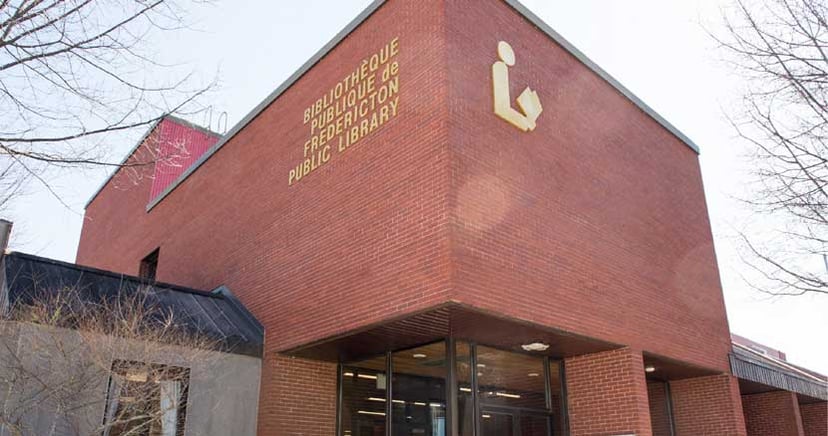Libraries aren’t just community spaces — they’re portals to information, education and everyday resources, from study groups to childcare. But what does that mean in a time when the communities libraries serve have changed dramatically?
If libraries aren’t ready to change just as much as the world around them, they risk losing relevance, or even fading into obscurity.
The future of libraries is uncertain, but it’s not all doom and gloom. With bold imagination, there is so much we have to look forward to. In the past few years, developments such as digital transformation, the rise of artificial intelligence, COVID-19, and patrons’ changing needs have provided an opportunity to rewrite the role of library services in our lives — here’s how.
See also:
A time of transformation
Digital transformation has changed our society at a staggering pace, and it’s not just libraries that are reeling as they try to keep up. In 2020, as institutions everywhere were already struggling to get a handle on digital transformation, COVID-19 hit and accelerated its pace exponentially.
To stay relevant and keep providing services to their communities during pandemic lockdowns, many libraries pivoted to offering more digital resources and online programs.
In a Chronicle of Higher Education article, journalist Scott Carlson noted that the development and adoption of digital information technology has become a key part of keeping academic libraries in particular alive and vital. When lockdowns resulted in university libraries that were literally deserted, library staff were compelled to accelerate their delivery of digital materials, remote services and other technologies to patrons.
Carlson noted that academic librarians had effectively led their institutions into the era of social distancing, “in part because libraries had already spent decades figuring out how to offer online services and get information to people who rarely came into the building.”
A flipping of priorities
The era in which libraries’ primary function was to house dusty stacks of books is quickly receding. Today, patrons expect intuitive and user-friendly digital spaces like apps and websites, complemented by in-person branches designed around their needs and safety, not those of the library’s collection. It means flipping a library’s priorities altogether.
The rapid emergence and adoption of artificial intelligence technologies, for example, has given libraries the opportunity to take the lead and become — as the Urban Libraries Council (ULC) put it — "a resource for the practical and responsible application of generative AI".
These emerging technologies — artificial intelligence, machine learning and natural language processing — will only become more ubiquitous and woven into the fabric of our daily lives, and public library systems and university libraries alike must prepare for this new reality.
Media and digital literacy are other critical factors that the libraries of tomorrow must address — and one that feels more important than ever. Today’s information economy is a changing landscape where digital content circulates virally with little accountability to journalistic standards. Now, libraries have an opportunity to really make an impact and support patrons' lifelong learning by helping their community members distinguish between credible information and harmful misinformation.
New library spaces, online and off

These are serious concerns, and for many librarians, they can feel like a heavy weight to carry.
But out of the confusion, exciting new library trends have emerged. Visionary institutions are rising to the challenge, dreaming up new kinds of community spaces designed around modern needs.
Digital touchpoints may be more important than ever, but physical spaces aren’t going anywhere just yet. In the future, libraries might just look a little different. The trend in library design towards open, experiential spaces offering well more than rooms to read is nothing new. But in the wake of COVID-19, the designers of these buildings might need to take enhanced safety protocols into account to mitigate the harms of any future public health emergencies.
Touchless and self-service amenities are an obvious choice, as are kiosks, curbside service, layouts that leave plenty of space for social distancing, and bookmobiles spread out around the community.
As restrictions lifted, a number of patrons found that the library had become more relevant to their needs than it had prior to the start of the pandemic. For many, the shift to remote and hybrid employment has become the new normal, and the local library offers a safe, low-cost venue for focused work, or even in-person meetings outside of the home.
Digital spaces for all
No matter how library branches evolve, digital services will only become more important. Websites and apps are now libraries’ first point of contact with their patrons, and should be carefully designed to be just as welcoming and accessible as a physical branch.
Digital services designed to meet community needs, such as study or job-search assistance, can be offered both virtually and in-person. Online media services, like PressReader, also serve a very important need. These digital platforms can help libraries keep communities engaged and address unequal access to quality media by bringing trusted journalism within everyone’s reach — no matter their socioeconomic status or unique accessibility requirements.
PressReader's catalog of thousands of magazine and newspaper titles — including global, national and local publications, gives patrons access no matter where they are. For users of academic and research libraries, PressReader is a reliable and accessible reference resource made up of diverse perspectives from accredited publications, in convenient digital formats.
Forward-thinking institutions

To picture the future of libraries, maybe we should look to the institutions that are already hard at work creating it.
New Brunswick Public Libraries (Canada)
In Canada, New Brunswick Public Libraries are both listening to community needs and protecting their unique cultural heritage by offering materials in their local First Nations languages of Mi’kmaq and Wolastoqey-Peskotomuhkati, as well as making sure the library’s website, branches, social media accounts, and other programming are welcoming to these populations.
Helsinki Central Library Oodi (Finland)
In Helsinki, Finland, Helsinki Central Library Oodi features a theater, restaurant, makerspaces, family space and more, in a bold, hyper-contemporary building that was highly anticipated by locals. The library’s facilities and robust programming schedule has made it a lively, active hub for community connection.
Bodleian Libraries (UK)
By contrast, the Bodleian Libraries at Oxford University are steeped in history, but were expertly brought into the modern day. Now, scholars at Bodleian’s historic Weston Library can work in peaceful silence in the library’s Hogwarts-esque interior — but also enjoy a latte in its onsite café or collaborate with colleagues in conversation-friendly breakout rooms. The Weston Library is also home to the Centre for Digital Scholarship, a physical and virtual hub "fostering innovation, collaboration, and knowledge-sharing in the realm of digital scholarship".
Challenge and opportunity

But for all this change and opportunity, it’s fair for libraries to feel overwhelmed by their next steps. For many librarians and their teams, the effort to realize their visions for the future are daunting, especially when faced with ever-dwindling library budgets.
In a blog post last fall, we told you about how academics and bodies such as the ULC (as noted above) have been advocating for practical, responsible and human-centered application of AI in libraries.
In a new report, researchers from ZBW – Leibniz Information Centre for Economics in Kiel, Germany, expand on the "human-centered" part of the equation. The authors note that libraries already employ AI and automation in a number of applications, including chatbots, cataloguing, classification, personalized recommendations, inventory management, analyzing data and generating text.
To facilitate the integration of human-centered AI — which the authors say "should be at the forefront of the development of work and training" — the report proposes that libraries focus on the following:
-
Incorporating user-centered design principles to ensure that AI systems are developed with the needs and preferences of users in mind
-
Developing AI expertise to better understand the capabilities and limitations of AI systems
-
Collaborating with professionals from related fields to gain a broader interdisciplinary perspective on the topic of human-centered AI
-
Developing ethical guidelines for the responsible use of AI, such as establishing principles to ensure transparency and accountability in decision-making, protect user privacy and avoid bias and discrimination
-
Providing training and support to library staff and patrons in the use of AI systems
-
Involving stakeholders (users and librarians at other libraries) to gather feedback and suggestions on the use of AI in library services
-
Monitoring and evaluating of AI systems to ensure they are working as intended and delivering the desired results
Listening to patrons
It might be challenging, but if libraries step back from their legacy models and think creatively, they can transform along with their patrons and communities. Maybe the answer is surprisingly simple: to stay relevant, libraries just need to listen to their patrons. If they’re able to do so, libraries just might find themselves more valued than ever.












